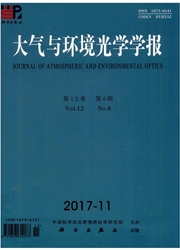

 中文摘要:
中文摘要:
为了研究猪瘦肉与肥肉、五花肉在冷藏过程中的挥发性有机物(volatile organic compounds,VOCs)特征,利用自主研制的质子转移反应质谱分别对三类猪肉在低温冷藏过程中产生的VOCs进行定时直接检测,得到了不同猪肉在新鲜时和变质后的VOCs质谱图以及冷藏过程中特征VOCs的变化趋势图。分析发现乙醇是三种新鲜猪肉的共同VOCs特征,而新鲜肥肉的特征是顶空存在乙醛,新鲜五花肉则具有二者的共同特征。冷藏过程中,三类肉的顶空VOCs在1~9日内均处于相对稳定阶段,之后变化的共同特征是乙醇等不含硫VOCs浓度迅速上升后下降,而二甲基二硫醚等含硫VOCs浓度开始上升,但各类猪肉顶空的VOCs浓度比率及变化快慢有较大区别。
 英文摘要:
英文摘要:
To study volatile organic compounds (VOCs) characteristic in the headspace of lean pork, fatty pork and marble pork during cold storage, the independently developed proton transfer reaction mass spectrometry (PTR-MS) was applied to directly detect the VOCs in the headspace of the three types of pork during cold storage. Along with the mass spectra of these VOCs when pork was fresh and spoilt, the trend of characteristic VOCs during cold storage were obtained. The result is that ethanol is the common VOCs characteristics of three types of fresh pork, and acetaldehyde is the characteristic of fresh fatty pork. The VOCs in the headspace of three types of pork were in a relatively stable stage during early nine days. After that, the intensity of somesulfur-free VOCs as ethanol increased and then decreased and the sulf-VOCs as dimethyl disulfide increased. However, the abundance and the change speed of VOCs for each type of pork is quite different.
 同期刊论文项目
同期刊论文项目
 同项目期刊论文
同项目期刊论文
 期刊信息
期刊信息
